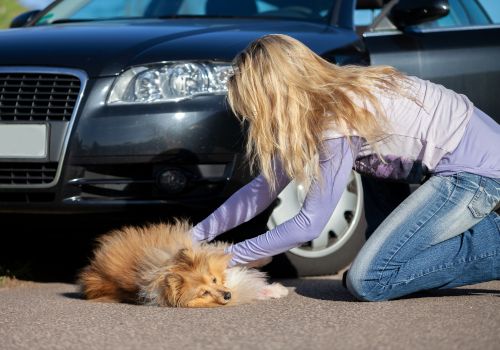Cardiopulmonary resuscitation (CPR) is a life-saving procedure for animals or humans experiencing cardiopulmonary arrest. It aims to sustain blood flow and oxygen to the brain and vital organs until advanced medical intervention can be started. However, contrary to TV portrayals, most patients suffering cardiac arrest can't be saved, even with CPR.
In 2012, the American College of Veterinary Emergency and Critical Care formulated evidence-based guidelines on effective CPR in pets. These guidelines inform the following recommendations, which include two crucial components of CPR - rescue breathing and chest compressions.

Rescue Breathing (If Two People are Present)
Basic CPR
This is performed by trained bystanders at the scene and is most relevant to pet owners. If cardiopulmonary arrest occurs, basic CPR must be initiated immediately. For single-rescuer CPR, a ratio of 30 compressions to 2 breaths is recommended, assuming the airway is open.
- Confirm Unconsciousness: Gently touch and try to awaken the pet to ensure it's not merely heavily asleep.
- Ensure an Open Airway: Extend the head and neck, pull the tongue forward, and clear the mouth and throat of any saliva, vomit, or foreign body. Be careful not to pull the hyoid apparatus (Adam's apple).
- Check for Effective Breathing: Look for chest movements and listen for breathing sounds. If no breathing is detected within 10 seconds, start rescue breathing.
- Begin Rescue Breathing: Cover the pet's nose with your mouth and forcefully exhale into the lungs. In cats and small dogs, hold the corners of the mouth tightly closed; in large dogs, hold the mouth and lips shut using both hands.
- Give 3 to 5 Full Breaths: Recheck for breathing and heart function after a few breaths. If the pet isn't breathing, continue rescue breathing 10 times per minute and push down on the stomach area every few seconds to expel any air that may have entered the stomach.
- Continue Rescue Breathing: If the pet's breathing is shallow or non-existent and they remain unconscious, continue rescue breathing 10 times per minute and transport the pet to the nearest veterinary facility.

Chest Compressions (If One or Two People are Present)
- Check for a Pulse: Start chest compressions if no pulse is detected.
- In Small Dogs: Compress the chest 100-120 times per minute using one or both hands around the chest.
- In Large Dogs: Compress the chest wall 100-120 times per minute using one or both hands, depending on what works best.
- Coordinate Rescue Breathing and Chest Compressions: Ideally, give breaths during compressions. If that's not possible, give two breaths after every 30 compressions.
- Continue CPR until you become exhausted, until professionals can take over, or until the pulse is palpable or heartbeats are felt and are strong and regular. Even after heart function has returned, artificial ventilation might still be needed due to nervous system depression resulting from the arrest.
Every resuscitated animal should be immediately transported to a veterinary facility for further examination and care.
Don't have a vet in your area yet? We can help you find a local veterinarian.
If you have more questions the GeniusVets Telehealth platform will give you unlimited access to text and/or video calls with board-certified veterinarians! To learn more click here.
